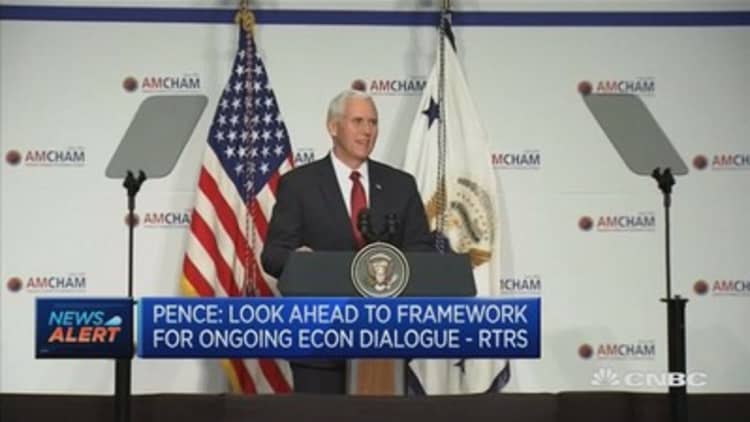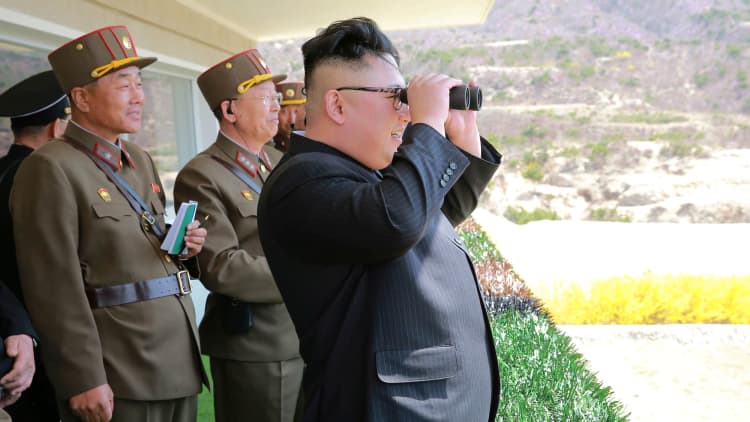
It's possible North Korea's missile development might be even further along had the secretive state retrieved more of the missiles it tested to glean information from their physical remains.
Over the years, debris recovered at sea has revealed secrets of North Korea's missile development to the West. Yet the rogue state hasn't always been eager (or able) to retrieve those missiles for its own use.
"They [North Koreans] never try to recover the debris as far as we know, which is surprising," said David Albright, president and founder of the Institute for Science and International Security, a Washington-based think tank. "They don't have many [sea recovery] capabilities and it's hard for them to outrun the South Korean navy to get to the debris."
Many of the North Korean missile tests have fallen in the Sea of Japan, which in some places reaches a depth of more than 2 miles.
Indeed, the North's missile debris may provide "some value" to the North but is perhaps more helpful to the U.S. and its allies, according to Thomas Karako, a senior fellow with the International Security Program and the director of the Missile Defense Project at the Center for Strategic and International Studies, a Washington think tank.
Experts point out the North's military has other tools at its disposal to learn from its own missile tests. For one, the North's missiles use tracking radar and wireless telemetry signals to provide missile test flight information.

Telemetry data comes back when the North fires missiles and they can use a "firing circuit" on a dummy nuclear warhead during a ballistic missile test to check to see if the circuits work properly as the missile comes down. Also, telemetry communication fed to the ground crew can provide information on whether the dummy warhead detonates at the desired altitude.
Nonetheless, analysts say the North's frantic missile development may have backfired on them to some extent. That's because the regime has a history of sometimes launching missiles right after a failure rather than taking a more cautious approach of spending a few months of studying what went wrong.
"Maybe Kim Jong Un is saying, 'okay boys, let's keep on going,' " said Bruce Klingner, a former CIA deputy division chief for Korea and now an Asia specialist at the Heritage Foundation, a Washington-based conservative think tank.
According to Klingner, the 33-year-old dictator's five years in power has seen him do two to three times as many missile tests as his father did in 18 years. He said rough estimates are about 25 percent of the North's budget goes to military spending.
And while North Korea's capability to recover missiles from extreme depths of the ocean is believed to be limited, Pyongyang was able to obtain missile fragments of a submarine misfire in 2015 when those pieces were spotted floating in the water, according to reports at the time.
Then again, experts believe it has sometimes been intentional for the North to attach explosives to rockets to prevent adversaries from obtaining useful intelligence information.
Even so, the South Korean navy was able to dredge up the first and second stage rockets for both the North's 2012 and February 2016 long-range missile launches. The South was able to do technical analysis and come up with range estimates and also reportedly concluded the missile could carry a 1,200-pound warhead.
The rocket recovery last year also confirmed Chinese firms have supplied parts to North Korea's rocket programs. Earlier this year, a UN Security Council report documented the China link in supplying rocket parts and noted there's still sanctions on North Korea that prohibit military hardware sales.
Chinese-made trucks were used in Saturday's military parade in Pyongyang that carried missiles, according to Reuters. There's also been instances before of Chinese vehicles being used as mobile launchers.
Karako said one of the launcher vehicles at the Pyongyang parade this weekend was similar to a launcher the Chinese are known to use for intercontinental ballistic missiles, or ICBMs.
"This is another instance of the Chinese not being as helpful as we might hope in terms of pressuring the North," said Karako. "I think our friends, the Chinese, have a long way to go. They claim to want to contain and curtail the North Korean programs but I think the actions would be nice as well as the words."
The U.S. has been alarmed by North Korea's nuclear and missile programs and threats from the regime to build an ICBM capable of reaching North America. The North displayed canisters for the ICBMs this weekend at the parade but Karako said it's still unclear when the regime will have a functional and operational ICBM capability.
"They've clearly expressed their intent to have that [ICBM] capability," Karako said. "They've signaled and displayed missiles already that could have that capability. They haven't yet tested it in a full ICBM test. But it's one of those things folks are anticipating because they've come a long way over the past couple of decades."
Watch: Retired Colonel says close to crisis in Korea



